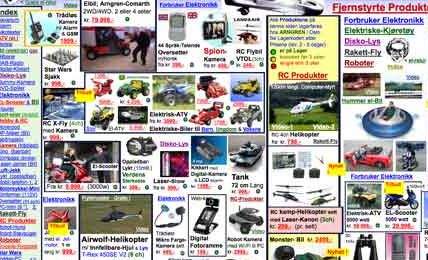
Your website is the hub for everything your business has to offer, which is why web design best practices are important to follow. It is an all-in-one center for your biography, products, portfolio, and insights (including bragging rights). You know what content is available, where to find it, and where to go if you can’t, but can your customers? How well your website works is just as important as how it looks.
We find ourselves in an age of digital technology and information. People are no longer popping into stores to see what’s available. Instead, they are searching online. Think of your website as the first impression your company gives. When a customer clicks on your URL, they want to be greeted in a warm, friendly manner. Imagine if you clicked on a webpage and were directed to this:

How long would you stay on the page? The average user has a short attention span, staying on a page only 10-20 seconds if unable to find what they’re looking for. Design your web page with the visitors’ attention span in mind.
Before you start creating or redesigning your website, do some research to see what you like and what reflects your business goals. Here are a few tips to follow when designing your website:
1. Branding: Always display your company’s logo. This seems like common sense, but you’d be surprised how many web pages lack branding. Display the logo so that upon entering the web page, visitors’ eyes will be directed to it. The upper-left corner works well. Contrary to popular belief, bigger isn’t always better. Don’t size your logo so that it takes up two-thirds of your website. Do make sure it’s large enough for people to recognize all of its elements. Lastly, make sure you use a high-resolution image so that the logo is easily readable. It is also convenient to link your logo to your homepage so that customers can easily redirect.
2. Navigation: When it comes down to it, web page visitors want to find answers. If users can’t find what they’re looking for, your web page serves an impractical purpose. Navigation should be clear and simple; think of what keywords you would use when you search your site. For best results, include clearly labeled primary and secondary navigation.
3. Minimalism: A little white space never hurt anyone. Simplicity is key. Use only the necessary amount of text and images to keep your customers’ eyes on the page. Try to avoid long paragraphs of text and flashy graphics with competing colors. Cut the clutter and your visitors will thank you.
4. Fonts: You want your web pages to be visually appealing, clean, and professional. Choose a common font and use that font consistently. Follow the formatting techniques of headings, bullet points, and brief paragraphs to ensure font sizes and colors are used in a consistent manner.
5. Color: Clean cut and professional is best, not a 2D Shrine Circus. Use a maximum of three or four colors (excluding neutrals) and use them consistently. Make sure your background and text colors have enough contrast. Viewers shouldn’t have to squint or sit inches from the screen to be able to see your content.
6. Responsiveness: Last year, mobile devices overtook desktop and laptop computer devices when it came to surfing the web. According to Marketing Land, more than 60 percent of the Internet is accessed by mobile devices. Responsive sites must be optimized for mobile device viewing. Design with responsiveness in mind, making sure your website remains visually appealing and functional whether it’s viewed from a phone, computer, or tablet.
7. Extras: These are some important extras that might be overlooked once your website code is written:
- Test hyperlinks to make sure both internal and external are working.
- Make sure your web pages are compatible with common browsers like Internet Explorer, Chrome, Firefox, Safari and mobile devices.
- Test to ensure all multimedia included on the page is functional.
- Keep content updated and error free.
The purpose of your web page is to present your company and everything it has to offer. Optimize it to be aesthetically pleasing and practical. This way, customers can easily and efficiently find what they are looking for. Lastly, always test your design before launching it. You never know how big of a difference added white space or a lighter shade of yellow might make.
There are a lot of different factors that go into designing a new website, but the design aspect is only a small part. Don't forget about benchmarking your current metrics, clarifying your goals, and building your design around your personas.
Topics: Web






